- Author Arianna Cook [email protected].
- Public 2024-01-12 17:55.
- Last modified 2025-06-01 07:38.
The history of the origin of the breed, a description of the standard of appearance of a Celtic cat, the nature and health of the pet, possible difficulties, the rules for keeping an animal at home, the price of a kitten. The Celtic cat, or, as it is also called in wider circles, the European Shorthair or "Celt" is a cat with a rich history, pretty, attractive appearance and no less interesting disposition.
Many, having seen this fluffy for the first time, can argue that he is not special and not remarkable in any way. Indeed, this has its own grain of truth, because the Celts are the owners of the most, that is, the usual appearance. But they cannot be called ordinary.
These animals have some kind of unearthly ability to win over people. The European shorthair cat, getting into any home, in the shortest possible time becomes not just a pet, but a real member of the family. They know how to be cheerful and playful, calm and balanced. Every minute spent with the Celtic becomes small, but still a holiday.
Probably, the most important advantage of these representatives of this variety is their simplicity and openness, and to this we also need to add not capriciousness and ease of care. For such a pet, your attention is most important, and everything else is nothing but a little food.
The history of the origin of the Celtic cat breed
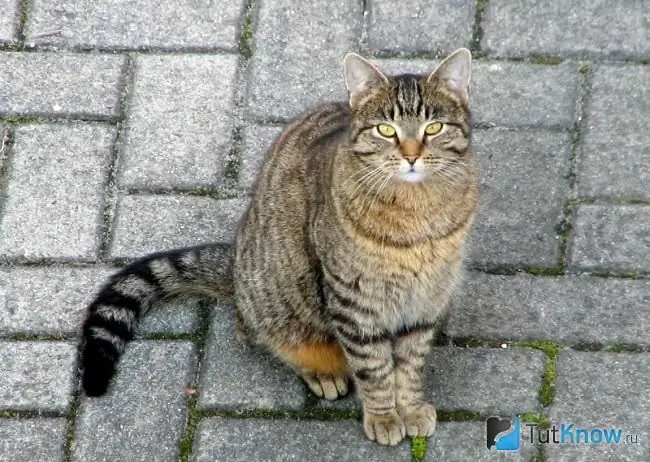
According to many scientific, literary and historical sources, the roots of the emergence of the European shorthair cat go back to ancient times. All territories covering the lands of old Europe can be considered the native territories of these purrs. Cute pussies lived there and we can say - they survived as best they could. Then there were different circumstances, wars, battles and other disasters that made life difficult for people, and, accordingly, animals suffered. Few could think of them, and even more so, few had the opportunity to shelter a kitten, or even just feed. Therefore, the European Celts survived as best they could.
Such rather difficult, and at times harsh circumstances, to some extent, benefited the animals. Cats have learned to exist and live independently of environmental conditions. As a result, these Celtic cats have mastered the most sophisticated hunting skills. Gradually, among the inhabitants of Europe, information began to spread that in those areas where cats live, there are absolutely no rats, mice and other unwanted animals. As soon as these rumors spread in all major cities, the life of the native cats began to improve. Local residents began to disassemble these unpretentious animals to their homes and it would seem that life was a success, but this is far from the end.
Around the end of the 20s of the last century, a resident of Germany, who was also a felinologist and the owner of a local yard cat, decided to call him the majestic name of Vastl von der Kohlung. And, in his opinion, a cat with such a name a priori cannot be considered a mongrel. The German was going to show his pet at one of the largest cat shows in Berlin.
Wastel von der Kohlung immediately received attention from both the visitors and the organizers of the exhibition. After this significant event, the life of the Celtic cat turned upside down. The British, having looked at the cat from all sides, decided to slightly correct the appearance of the animal, making it more squat and with a shorter muzzle. Thus, the Celtic cat became the ancestor of the British Shorthair breed.
Following the British, the French began to improve the variety, and after them the Americans, and the American Shorthair appeared. Later, the Swedes and Norwegians took up the breed, as a result, the Swedish domestic cat was bred.
By the early 80s of the last century, the world's feline associations began to recognize, one after another, the Celtic variety as such. Initially, a preliminary standard for the species of the European Shorthair cat was formed. A little later, the differences between these animals and the breeds descended from them were clearly spelled out, and they began to be officially called Celtic cats.
Celtic cat: description of the breed standard and photo
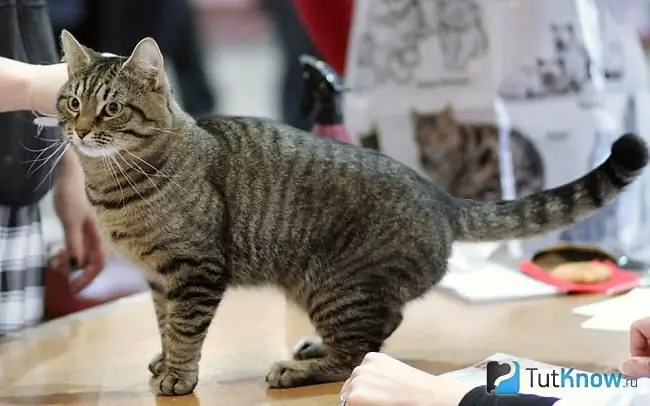
- Body type European Shorthair cat is very regular and harmonious. In terms of size, these mules belong to the category of slightly larger than average, their body is rather stocky and strong with well-developed muscles. The chest area is very well developed, quite strong, wide and rounded in shape. It is also noteworthy that, despite the very impressive indicators of body weight, which sometimes reaches eight kilograms, these animals are very mobile and, moreover, flexible.
- Limbs celts of medium length, no less strong and covered with well-developed muscles. Each of them ends with cute, small, but very stable legs that resemble a circle in shape.
- Tail process the European shorthair cat has an average length. Quite wide at the base, but noticeably narrowed towards the tip. The organ of balance of pets is wrapped in thick, soft hair.
- Head these cats are relatively large, which makes the appearance of the animal especially attractive. It resembles a circle in configuration. The muzzle is also rounded, but its size in diameter is slightly less than its length. The forehead is also rounded in shape, not very prominent, the nose is slightly wide along its entire length, but very neat. The profile of the animal is no less beautiful, according to the breed standard, pedigree cats should always have a noticeable transition from the nose to the forehead. Well-developed, slightly plump cheeks give a special charm to the muzzle.
- Auricles the Celts are medium in size, according to the standard, the width of the ears should be equal to their height. The ears are set in a clear straight line, spaced at a great distance. At the base, the auricles are very wide, but smoothly taper to a slightly rounded tip. The breed standard allows for the presence of tassels on the tip of the ear, but their absence is not a disqualification.
- Eyes Celtic cats are medium in size, but they are so wide open that they may seem just huge. In configuration, they are similar to a circle, placed at a slight slope. The color of the iris can be amber, green, blue, heterochromia is also allowed, the only rule implies the fact that the color of the eyes should be in harmony with the main color of the color. Previously, heterochromia was considered a sign of inferiority of the breed, but today animals with different colors of the irises are valued much more worthily.
- Wool, the wrapping body of the European Shorthair cat, although short, is very, very thick. The texture of the wool is quite dense, but if you stroke a cat, you get the impression that you have some delicate soft toy made of extremely expensive and high-quality fabric under your hands. The coat gives off a characteristic shine. As for the color, we can say that Celtic cats are still those fashionistas. Their coats can be painted in a wide variety of colors and shades. They do not like them and people who prescribe the breed standard only dark brown, lilac color, as well as such color options as fawn, cinnamon and acromelanic.
Celtic cat: personality traits

Bringing such a pet as the European Shorthair cat to your home, you should immediately understand that this is an animal with character. Long years of living and survival in street conditions did their job, these cats became strong, independent and they were able to carry these qualities through the years and overwhelming works of breeders. The representative of this breed adapts very well to living in a house, and also with a person under one roof. However, the cat will never have the realization that he somehow depends on you or that he will not live without you. Therefore, it is unlikely that you will become an eyewitness to the fact that your pet is following you on your heels. The owner will not be able to take him in his arms and cuddle him whenever he wants - this is permissible only when "his feline highness" deigns.
But, in spite of all this demonstrative vanity and arrogance, the Celts are kind-hearted pets, they will happily accompany you at lunch or watching the news in the evening, and if you scratch them behind your ear, they will still purr a song.
Most often, this animal chooses one of the family members as a close friend, all other household members will, of course, be held in high esteem and respect, but nothing more. Celtic cats get along well with children. Children's games and their perky noise appeal to the Celts and they happily join in this fun. As for small children's pranks in relation to animals, this comrade shows understanding and patience, but if the child hurts or just severe discomfort to the cat, the purr will simply go away and is unlikely to trust the baby in the future.
As for other pets, it all depends on their type. If a dog or any other cat lives in your house, you can be calm and absolutely confident, they will make friends and will entertain each other in every possible way. The sight is, of course, very funny, but sometimes the pets get very carried away and do not notice that they accidentally knocked over a vase or a figurine from the shelf. Therefore, it is better to remove all valuable and fragile items away. But if there is a guinea pig, a hamster, or even worse a parrot in the house, then this is certainly a problem. In this case, the Celts will sharpen their strong hunting instincts.
European shorthair cat health
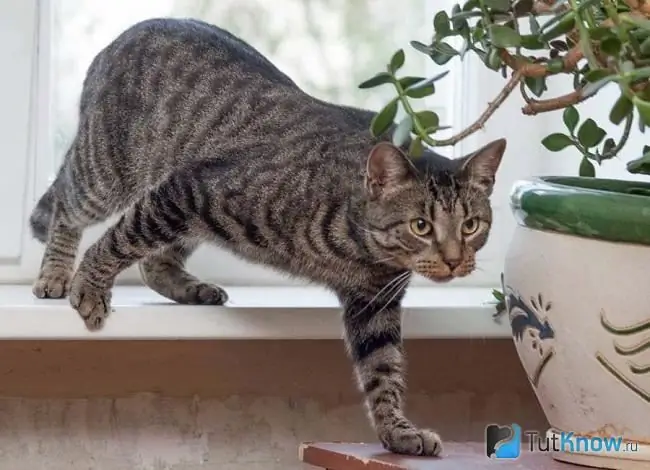
Probably for the reason that the life of Celtic seals was not always so beautiful and carefree, and the harsh conditions of natural selection made these purrs very strong. From nature, they got a fairly strong and stable natural immunity, if it is also reinforced with timely vaccination, then these animals will be immune to many pathologies. Even to primordial feline ailments, they have very good resistance. They also have no hereditary diseases.
Because of this, we can say that with proper care, all hygiene procedures, high-quality, balanced nutrition, regular walks in the fresh air, the European shorthair cat will delight you for about 15-18 years.
Celtic cat: home maintenance and care
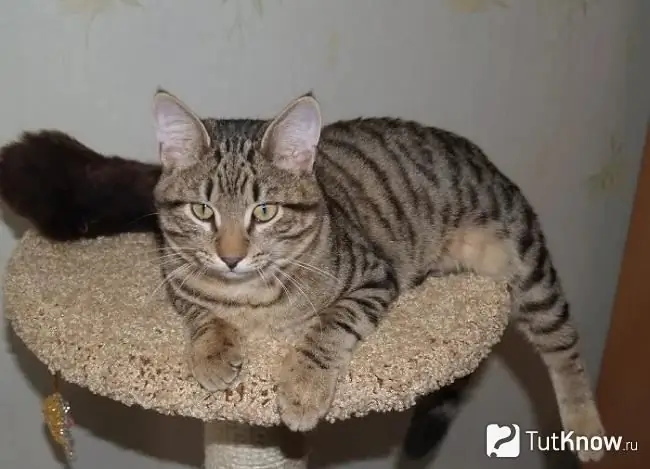
Based on how self-sufficient and independent these cute pets behave, it may seem that they do not need anyone's help at all. But this judgment is extremely wrong. Of course, caring for them is minimal, but there are still some rules.
Hygiene procedures
Like all cats, Celts need to regularly clean their ears, no matter how strong their immunity is, and they are not immune from acquired deafness or inflammatory processes caused by excessive accumulation of earwax, dirt particles and dead epidermal layer. Therefore, once a week, it is necessary to clean the cat's external auditory canal using baby cotton swabs equipped with a special stopper.
You can, of course, use the most common ones, but the cat is unlikely to meekly sit during this procedure and you can easily injure his sensitive eardrum. The consequences of such an injury can be much more severe than from uncleaned ears. As an excipient, experts recommend using a special lotion or balm for cleaning the ears. It is commercially available in every veterinary pharmacy. A good remedy in that it perfectly dilutes earwax and does not cause allergic reactions on the skin of your pet.
The kitten's eyes also need to be disinfected periodically, you can also do this once a week. To do this, you need to prepare two cotton pads, for each eye separately and a disinfectant solution. It is best to use a low concentration boric acid solution or a decoction of medicinal herbs. If this is not at hand, and you run far to the pharmacy, you can also use tea leaves, the main thing is that it is sugar-free and room temperature.
In order to prevent the formation of tartar, a Celtic cat needs to brush its teeth. This is done with a toothbrush or with a dense, clean cloth wrapped around the index finger. In addition, it is good to purchase a special tooth powder.
As for the claws, in the Celts they grow at a very enviable rate, therefore, if your pet does not regularly walk in the fresh air and grinds its "weapon" on the trees, a scratching post will not be enough for him. Therefore, in order to preserve the integrity of the furniture upholstery, it is recommended for such a pet to trim the claws. This must be done very carefully and carefully. For this procedure, you will need very sharp forceps and at least one helper to hold the animal. Only a few millimeters of the transparent tip of the claw is allowed to be trimmed; if you damage the claw beyond the boundary line, you can cause your friend a sharp painful sensation, which can often lead to painful shock.
Leisure
In order to keep the Celtic busy during your absence, it is best to think of some kind of entertainment for him. You can use many things as toys, for the European Shorthair cat it will not matter at all whether it is some kind of new, interactive toy, a mouse with a winding mechanism, or the very usual lace from a sneaker or an old tennis ball, the main thing is that there was something to run for. A large, noisy plastic bag and even a cardboard box brought from a grocery store will not be left without cat's attention. Can equip for your pet and a kind of cat rides. It can be a variety of tunnels or even a system of small trees that the cat will climb and at the same time they will serve as a good attribute for grinding claws.
Since the representatives of this breed and their ancestors grew up and lived in open nature, they do not just love walks in the fresh air, they are vital for animals. If you live in a city apartment, you can take your pet for a walk on a leash. And in the event that you have a private house, it can be called a kind of "paradise" for a Celtic cat. Only you should be prepared for the fact that your pet can periodically bring trophies of his successful hunt to your doorstep or even to your house, do not be alarmed if you spot a mouse or a rat on the porch. It was your tailed friend who decided to please you with his feline delicacies.
Nutrition
Most breeders claim that the Celts are not picky about food at all, but this does not mean that they can eat sandwiches or burgers. The best nutritional option would be a combination of premium ready-made dry food with canned food and periodic courses of vitamin and mineral complexes.
Celtic cat: where to buy and the price of a kitten
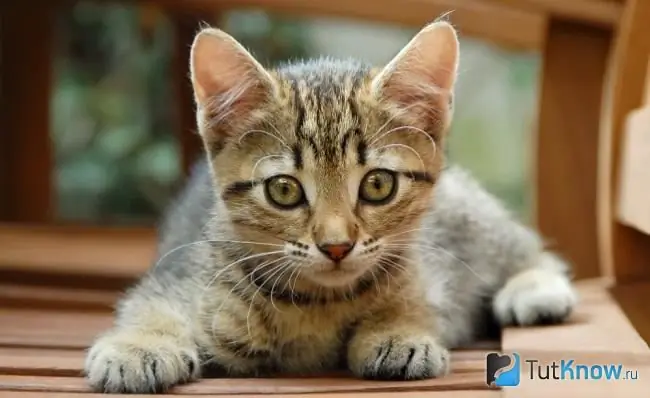
On the territory of the CIS countries there is not a single nursery where Celts are bred, they can be bought on the market, but whether they will be purebred is another question. If you are looking for a pet in catteries of neighboring countries, then be prepared that such a kitten will cost an average of 28,000-32,000 rubles.






